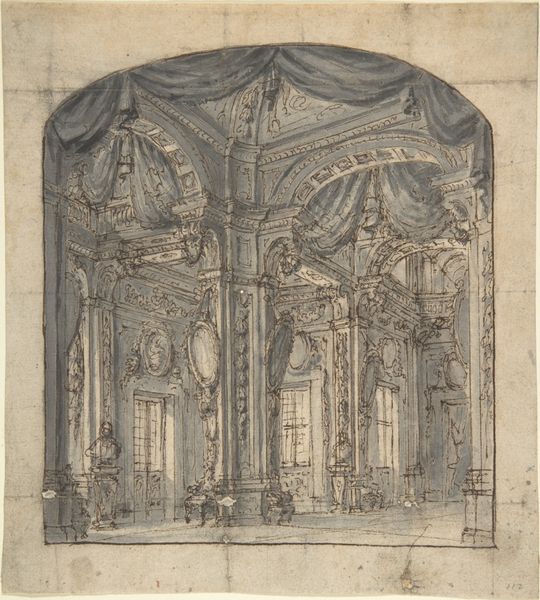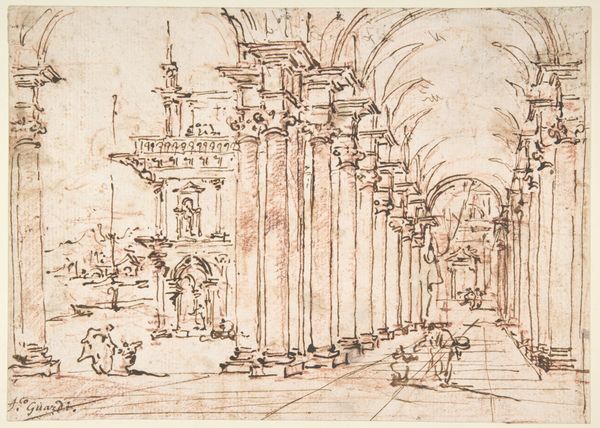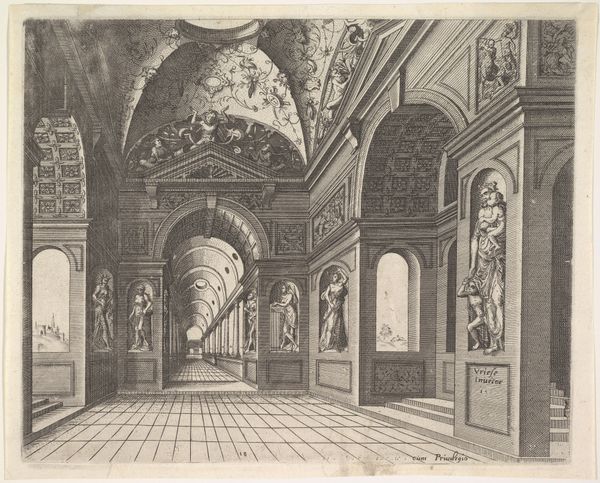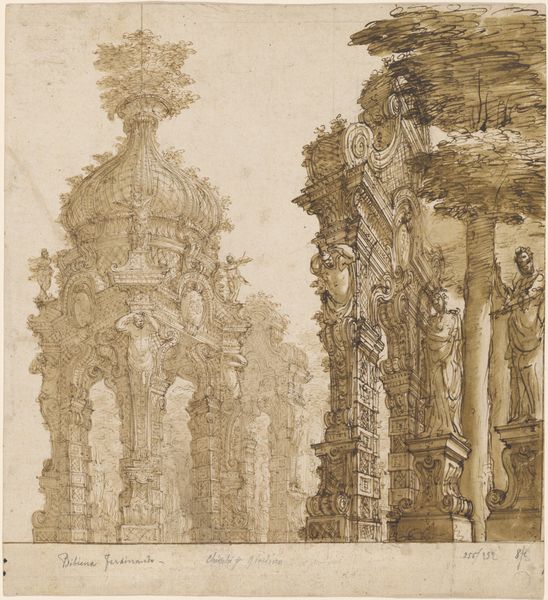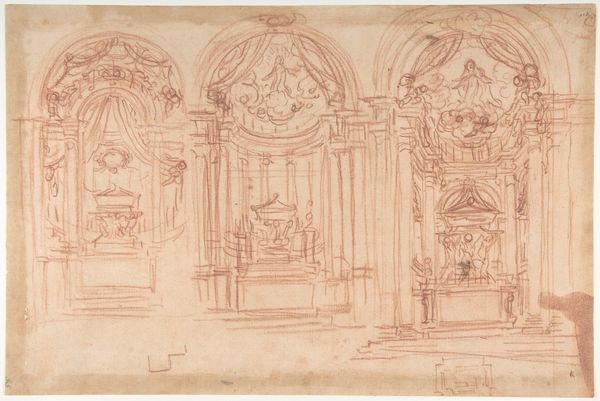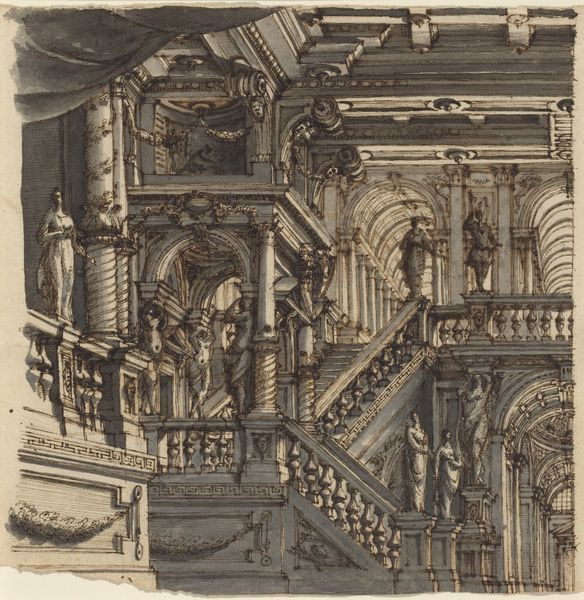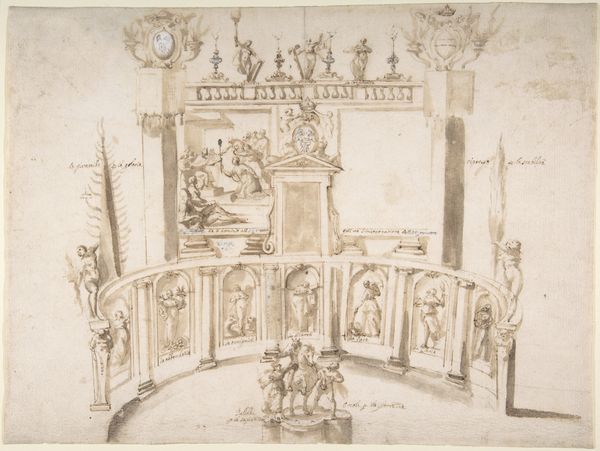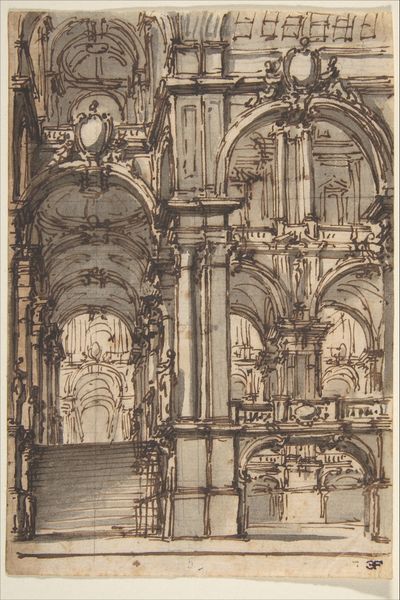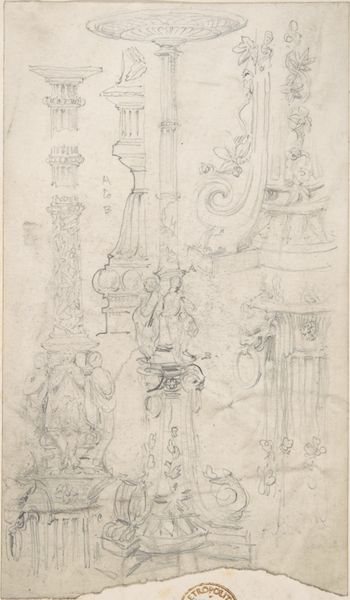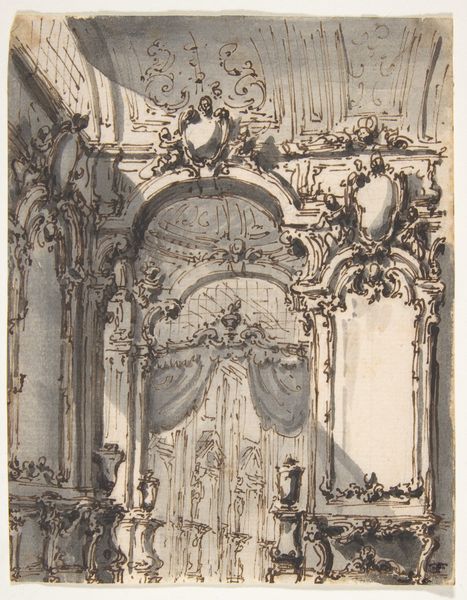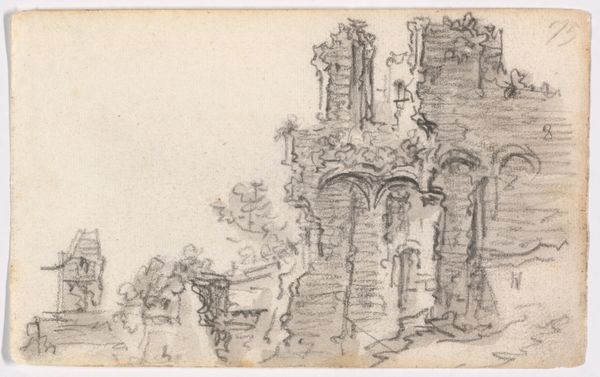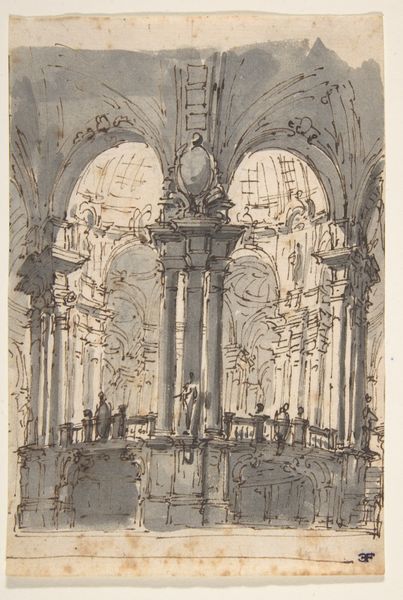
Design for a Stage Set: The Gallery of a Magnificent Palace Decorated with Mirrors. 1696 - 1756
0:00
0:00
drawing, print, ink
#
drawing
#
ink drawing
#
baroque
# print
#
ink
#
geometric
#
cityscape
#
history-painting
Dimensions: sheet: 7 13/16 x 8 1/4 in. (19.9 x 21 cm)
Copyright: Public Domain
Curator: This is a drawing by Giuseppe Galli Bibiena titled, "Design for a Stage Set: The Gallery of a Magnificent Palace Decorated with Mirrors." We believe it dates to sometime between 1696 and 1756. Editor: I'm struck by the austerity. For something billed as "magnificent," there's a subdued quality. Is it the monochromatic ink? It’s grandeur drained of color, hinting, perhaps, at a society structured by constraints, obsessed with surface appearances but hiding something beneath. Curator: The Baroque aesthetic does lean into displays of power and the theatrics of the elite, absolutely, and this design certainly does that, but I agree, it's restrained. Consider though: Stage design functioned as a potent propaganda tool. Performances, like royal entries, visually communicated dynastic power through coded gestures and iconographic details within the mise-en-scène. Editor: The repeated mirrored surfaces definitely speak to image and reflection. There's a psychological element; those endless reflections force viewers to confront their image. Consider the court portraiture of the time; what anxieties were masked and managed in the construction of selfhood? What do these echoes of one's image suggest about the importance of appearances at that time? Curator: True. While seemingly ornamental, these decorative mirrors carry significant symbolic weight. Think of "speculum principis" – the "mirror of the prince," a literary genre offering moral guidance to rulers. Perhaps this gallery isn't merely about visual pleasure but functions didactically, reflecting back to its inhabitants expected behaviors. Editor: These rooms are empty. The architectural details have become actors playing out ideas of what life should look like in these social situations. It suggests, perhaps, how rigid structures of governance affected individual identity in performative ways. What, I wonder, could these silent mirrors tell us if we understood their reflections. Curator: Excellent point! It asks us to critically consider not only aesthetic tastes, but to also dissect the political, social, and psychological underpinnings of performative visual display. What, in effect, are these rulers reflecting? Editor: It’s a reminder that even seemingly decorative forms are rife with social implications. Curator: Exactly! A vital reminder that even representations of splendor should be understood within their complex social and historical realities.
Comments
No comments
Be the first to comment and join the conversation on the ultimate creative platform.

